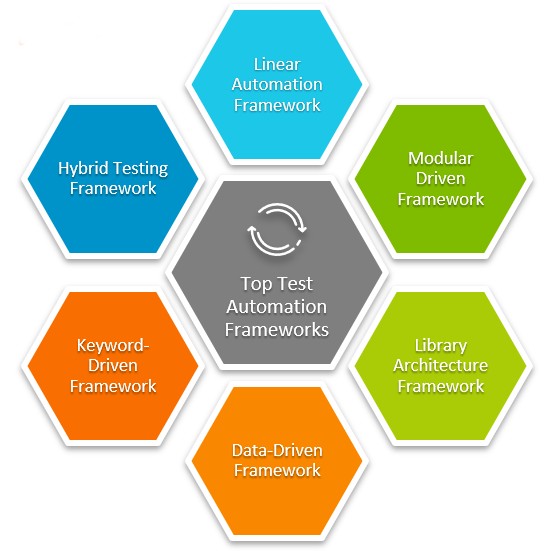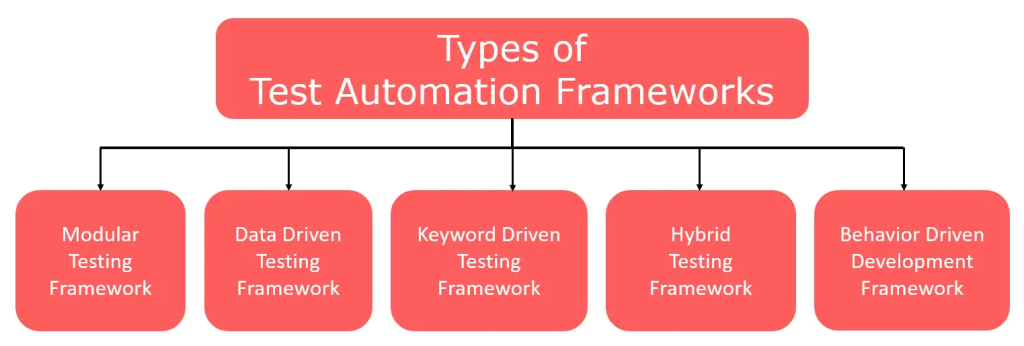
Introduction to Automated Testing Frameworks
Testing is an essential part of software development, and automated testing frameworks have become a popular choice for many organizations. In this article, we will explore what automated testing frameworks are and why they are important.
What are Automated Testing Frameworks?
An automated testing framework is a set of guidelines, standards, and tools used for creating automated tests. It provides a structured way of organizing test scripts and test data, making test creation and maintenance more manageable.
Why are Automated Testing Frameworks Important?
Automated testing frameworks help improve the efficiency, speed, and accuracy of testing. They also increase test coverage, reduce manual effort, and minimize errors. With automated testing frameworks, businesses can achieve cost-effectiveness and gain a competitive edge in their respective industries.
Benefits of Using Automated Testing Frameworks
Improved Efficiency and Speed
Automated testing frameworks allow testers to execute a large number of tests quickly and reliably. They are more efficient than manual testing and reduce the time to market for software products.
Cost-Effectiveness
By automating testing, businesses can reduce the cost of hiring manual testers and increase productivity. It also eliminates the need for expensive hardware and minimizes the risk of human errors.
Increased Test Coverage and Accuracy
Automated testing frameworks enable testers to achieve higher test coverage and accuracy, ensuring that all critical areas of the software are tested thoroughly.
Reduced Manual Efforts and Errors
Automated testing reduces the need for manual testing, minimizing the risk of errors and saving time and effort.
Types of Automated Testing Frameworks

There are different types of automated testing frameworks, including:
Linear Scripting Frameworks
This type of framework involves a linear sequence of test scripts that are executed in order.
Data-Driven Frameworks
A data-driven framework uses external data sources to drive test execution, allowing testers to perform more comprehensive tests.
Modular Frameworks
Modular frameworks divide the application into smaller, more manageable modules, which can be tested independently.
Keyword-Driven Frameworks
Keyword-driven frameworks use a set of keywords to define test actions, enabling testers to create tests without the need for programming expertise.
Hybrid Frameworks
A hybrid framework combines the best features of different frameworks, allowing testers to create more flexible and efficient tests.
Best Practices for Choosing an Automated Testing Framework
Identifying Testing Needs and Objectives
Before choosing a framework, it is essential to identify the specific testing needs and objectives of the business.
Evaluating Framework Features and Functionality
Evaluate the key features and functionality of different frameworks to determine which one is best suited for the organization.
Assessing Technical Resources and Expertise
Consider the organization’s technical resources and expertise, such as programming and testing knowledge, to ensure the chosen framework aligns with the team’s skillset.
Implementing Automated Testing Frameworks in Your Testing Process
Automated testing frameworks are essential in today’s software development world. They allow for faster and more efficient testing, which ultimately leads to better quality software. However, implementing an automated testing framework can be a daunting task. Here are three essential steps to take when planning and designing an automated testing framework.
Planning and Designing the Framework
The first step is to plan and design the framework. This involves identifying which areas of the software will be automated, selecting the appropriate testing tools, and defining the testing process. It is essential to consider the specific requirements of the project, such as the target platform, the type of application, and the testing methods to be used. Proper planning and design will help ensure the framework’s success.
Creating and Executing Automated Test Scripts
The next step is creating and executing automated test scripts. The test scripts are at the core of the framework and should be written with care and attention to detail. The scripts should automate all relevant testing scenarios and be repeatable. A good strategy is to start with the most critical tests and then gradually expand the test coverage.
Integrating with the Development Process
Finally, it is essential to integrate the automated testing framework with the development process. This helps ensure that the testing process is seamless, and any bugs or issues are caught early in the development cycle. Integration also allows for continuous testing and makes it easier to maintain the testing process over time.
Challenges and Solutions in Automated Testing Frameworks
While automated testing frameworks offer many benefits, they do come with some unique challenges. Here are three common challenges and solutions to overcome them.
Test Maintenance and Scalability
One of the most significant challenges with automated testing frameworks is test maintenance and scalability. As software changes, the tests must also change to reflect the new requirements. Updating and maintaining test scripts can be time-consuming and difficult. One solution is to use a modular approach to testing. This approach allows for easy test maintenance and scalability.
Test Data Management and Security
Test data management and security are also challenging aspects of automated testing frameworks. Test data must be managed carefully and securely to ensure that the tests remain valid. One solution is to use synthetic test data for testing. Synthetic test data is generated automatically, making it easy to manage and secure.
Framework Integration and Compatibility
Finally, framework integration and compatibility are common challenges when implementing automated testing frameworks. The framework must work seamlessly with other development tools and be compatible with the target platform. One solution is to choose a testing tool that has a strong track record of integration and compatibility with other tools and technologies.
Future of Automated Testing Frameworks and Emerging Trends
The future of automated testing frameworks is bright, with many emerging trends and technologies that promise to make testing even more efficient and effective. Here are three emerging trends to watch.
Artificial Intelligence and Machine Learning in Automation
Artificial intelligence and machine learning are making their way into the world of automation testing. These technologies promise to make testing even more efficient and effective. AI-powered testing tools can learn from previous test results and make predictions about where new defects are likely to occur.
Cloud-Based Automation Testing
Cloud-based automation testing is becoming increasingly popular, allowing for seamless testing across multiple platforms. Cloud-based testing tools can be accessed from anywhere, making it easy for teams to collaborate and share test results.
Continuous Testing and Agile Automation
Continuous testing and agile automation are promising trends that allow for faster and more efficient testing. Continuous testing involves integrating testing into the development process, allowing for faster feedback and bug fixing. Agile automation involves implementing agile principles in the testing process, allowing for more flexibility and adaptability. These trends promise to make testing even more efficient and effective in the future.Automated testing frameworks have revolutionized the way software is tested and validated, making it easier, faster, and more efficient. The right framework can help you save time, reduce costs, and improve testing accuracy, but it requires careful planning, implementation, and maintenance. We hope this article has provided you with a comprehensive understanding of automated testing frameworks, their benefits, and best practices for choosing and implementing them. By incorporating the right automated testing framework into your testing process, you can achieve faster time-to-market, higher quality software, and happier customers.
Frequently Asked Questions (FAQ)
What are the benefits of using automated testing frameworks?
Automated testing frameworks offer a range of benefits, including improved efficiency and speed, cost-effectiveness, increased test coverage and accuracy, and reduced manual efforts and errors. These benefits can help you achieve faster time-to-market, higher quality software, and happier customers.
What are the different types of automated testing frameworks?
Automated testing frameworks can be broadly classified into five types: linear scripting frameworks, data-driven frameworks, modular frameworks, keyword-driven frameworks, and hybrid frameworks. Each type has its own strengths and weaknesses, and choosing the right one for your project requires careful consideration of your testing needs and objectives.
What are the best practices for choosing and implementing an automated testing framework?
Some of the best practices for choosing and implementing an automated testing framework include identifying your testing needs and objectives, evaluating framework features and functionality, assessing technical resources and expertise, planning and designing the framework, creating and executing automated test scripts, and integrating with the development process.
What are the challenges associated with automated testing frameworks?
Automated testing frameworks can face a range of challenges, including test maintenance and scalability, test data management and security, and framework integration and compatibility. Overcoming these challenges requires careful planning, implementation, and maintenance, as well as staying up-to-date with emerging trends and best practices in the field of automation testing.